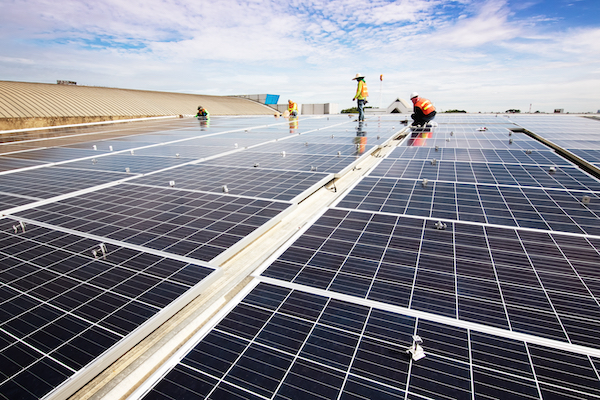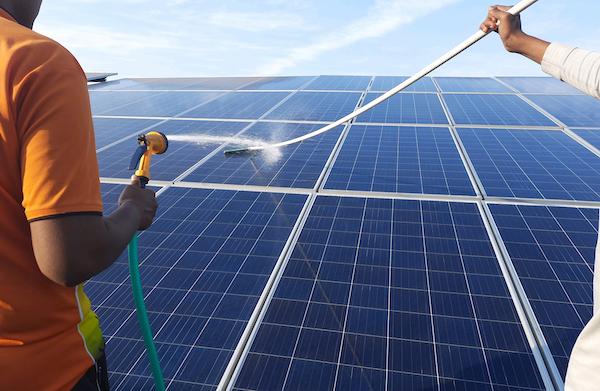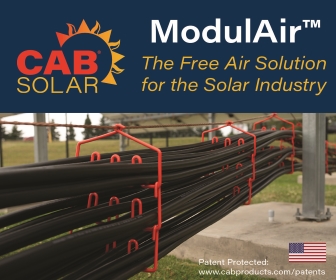Keep Solar Up and Running
Over the last couple of decades, the world has observed significant climatic disruptions that have impacted various regions globally. Climatic change has increased the frequency of natural calamities such as heat waves, flooding, and drought, and a rise in sea-level. This has compelled countries to invent processes or methods to overcome these climate challenges. Accordingly, they have undertaken several initiatives to reduce greenhouse gas emissions in order to mitigate climate disruption.
One of the main reasons for environmental pollution is the conventional method of electricity generation using coal, which is a major source of greenhouse gas. In response, countries have pledged to reduce their dependency on coal for power generation. This has led to an increase in focus on clean sources of power generation, with solar and wind being the most prevalent.

Countries and organizations across the globe are focusing on harnessing solar for power generation using two main technologies: solar PV and concentrated solar power. Of the two, the preferred choice is solar PV, where solar energy is directly converted into electricity through solar cells made of silicon and gallium, among others.
Higher adoption of solar
More than 1 TW of solar PVs are installed worldwide, with China having the largest solar PV installed base, followed by the US, India, and European countries. Installation of new solar PV increased from 101 GW in 2016, to 182 GW in 2021. The final tally for new installations should show growth by around 100 GW to more than 280 GW, compared to 2021. In the next 8–10 years, annual installation of solar PV would surpass 500 GW.
Besides the growing concern of climate change, a major factor driving the adoption of solar PV is cost. The cost of modules has fallen by almost 80 percent since 2009, and is likely to drop further with higher rates of installation and technological advancement. Moreover, COVID-19 and the Russia-Ukraine war have fueled the adoption in recent years.
O&M to keep solar running
Once solar PV is installed, it requires timely inspection and maintenance to make sure that it operates properly, and to improve its overall efficiency. The Operation and Maintenance (O&M) of solar PV includes activities involving labor, technology, and tools that help optimize operations.
There are three types of O&M activities related to solar PV:
- Preventative maintenance includes routine inspection and maintenance of solar PV equipment to avoid breakdowns and unnecessary production losses.
- Corrective maintenance is done for unplanned breakdowns to minimize downtime.
- Condition-based maintenance predicts breakdown using real-time data, and accordingly prioritizes activities and resources.
Condition-based maintenance is gaining popularity, with the adoption of software systems such as Data Acquisition Systems (DAS) to monitor the operation of solar PV.

O&M of solar PV is carried out in-house or outsourced to a third party. In the case of in-house, the installer provides O&M services and is the only point of contact for all the service requirements of the customer. In the case of outsourced, the company recruits experts that inspect, track, and offer O&M services. Outsourcing to reputed third parties has gained traction as they can provide specific O&M services.
Global O&M market
The global solar PV O&M market has posted remarkable growth over the last five years, and was estimated at USD8–10 billion in 2021. Utility-scale PV solar is the largest user of O&M services worldwide. The US is the most attractive market for O&M services, followed by Asia and Europe. The non-residential solar PV O&M market is expected to touch USD14–17 billion by 2030.
The key driver is an increase in solar installation. By 2030, the global cumulative installed capacity of solar PV is expected to surpass 2.2 TW. Other factors that will drive the increase include aging solar PV infrastructure and higher adoption of new technologies for monitoring and maintenance.
There has been an increasing adoption of new and innovative technologies for O&M such as remote sensing using IoT, cloud computing, artificial intelligence, and aerial techniques for visual imaging. With the increase in the size of solar farms, and a maturing asset base, the adoption of new technology is a prerequisite for O&M activities. New technologies help in optimizing operations and maximizing Levelized Cost of Energy (LCOE).
Future outlook
The growing emphasis on renewable energy to mitigate the impact of climatic change will drive the penetration of solar PV across the globe. The increase in solar installed capacity, especially large utility-scale PV, would drive demand for O&M services. The primary market for solar O&M services would be the Americas, followed by Asia-Pacific, and EMEA. Most of the O&M spending over the next 10 years would be for corrective repairs, including inverter replacements.
The future of solar PV O&M looks promising as the total installed capacity expands. O&M activity would be highly technology-driven, with the usage of digital technologies for monitoring and automated tools for maintenance.
Dhirender Mishra is Senior Manager, Energy & ESG at Aranca. Aranca | www.aranca.com
Author: Dhirender Mishra
Volume: 2023 March/April










.png?r=7308)

